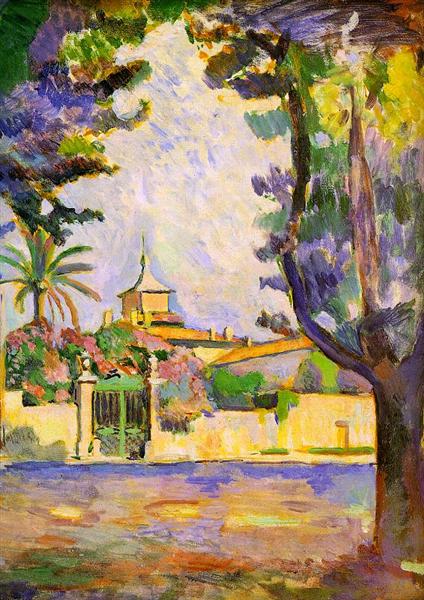Description
At the dawn of the 20th century, Henri Matisse was creating a visual universe that would challenge conventional perceptions of art, laying the foundations for what would later be known as Fauvism. One of the key works of this period is "Place des Lices, St. Tropez" from 1904, a 43x60 centimeter painting that exquisitely captures the essence of a moment and a place through the mastery of color and form.
The work is set in the picturesque Place des Lices in Saint-Tropez, a place of rest and transit where colors and shapes amalgamate into a vibrant mosaic. The composition is rich in details that configure an atmosphere of serenity and everyday life, highlighting Matisse's unparalleled talent for turning ordinary scenes into unique aesthetic experiences.
Matisse uses an almost pointillist approach in this work, spreading colors on the canvas so that the contours of the objects are not strictly defined but suggested through the juxtaposition of tones. We observe a series of tree trunks that stand rigid and segmented in the foreground, painted with an intense green that wonderfully contrasts with the blue of the clear Mediterranean sky. These natural elements configure a visual rhythm that directs the observer's gaze towards the background of the painting.
The use of color is undoubtedly one of the defining characteristics of this work. Matisse does not limit himself to faithfully reproducing the colors of nature but reinvents them, using striking and pure tones that endow the scene with particular dynamism. Green and blue hues predominate, creating a fresh and light-filled atmosphere that evokes the essence of summer on the French Riviera. The touches of red and orange scattered throughout the composition add vital contrast, imbuing the scene with underlying energy.
Although "Place des Lices, St. Tropez" does not explicitly present human figures, the arrangement of elements and the texture of the painting suggest the tacit presence of everyday life in this place. There is a stillness imbued in the representation of the trees and the arrangement of space that hints at the possibility of invisible passersby, a fleeting market, or the murmurs of local inhabitants. Thus, Matisse manages to capture not only the appearance of a place but also its living pulse, in what could be considered a soulful portrait of the square.
This work is part of Matisse's early production corpus, marked by a fervent search for innovation and personal expression. In "Place des Lices, St. Tropez," one can observe the seeds of what would be his evolution towards Fauvism, a movement distinguished by its chromatic passion and its rejection of the literal representation of the visible world.
"Place des Lices, St. Tropez" is not only a testament to Matisse's talent for painting but also a window into the artist's aesthetic sensitivity to the landscapes and life of the Mediterranean region. This work shows his ability to combine the simple and the complex, the seen and the felt, in a chromatic symphony that transcends the purely visual to touch the deepest fibers of the viewer.

